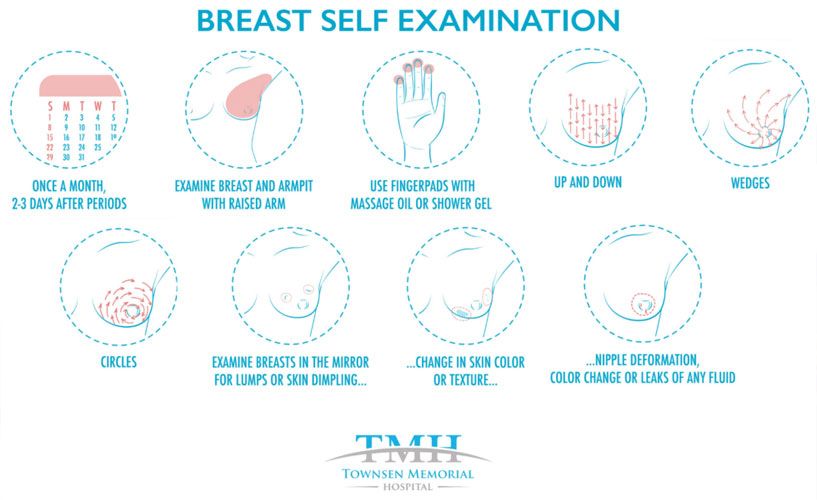Breast Cancer And Early Detection

As you probably already know, October is Breast Cancer Awareness Month. While participating in charity runs and wearing pink are great ways to raise funds and awareness, knowing the early warning signs of breast cancer can help you detect the disease early. Whether it’s yearly screenings or monthly self-checks, familiarizing yourself with the early signs of breast cancer can save your life.
Early Symptoms of Breast Cancer
Many patients report only noticing one or two symptoms at first. If you notice something is wrong or has changed, contact your physician. Some early symptoms of breast cancer include:
- A change in the breast or nipple appearance, i.e. a change in breast shape, skin dimpling, unexplained swelling or shrinkage, turned or inverted nipple, or scaly, red or swollen skin around the nipple or areola.
- Bloody or Clear Nipple Discharge
- Nipple Tenderness
- Lumps (while all lumps need to be examined by a professional, not all lumps are cancerous)
- Enlarged pores in the skin of the breast, that can sometimes mimic the look of an orange peel
It is important to note that while women who experience breast pain, discomfort or tenderness may be concerned about breast cancer, breast pain is typically not a symptom.
How to Check Yourself for Breast Cancer
While noticing any one of the symptoms listed above can be scary, it’s important to remember that not every symptom automatically means you have cancer. By performing monthly self-checks, you can more easily identify any changes to your breasts and alert your doctor if necessary.
Once per month, all adult women should take a few minutes to examine their breasts. According to Johns Hopkins, forty percent of diagnosed breast cancers are detected by women who feel a lump. While mammograms can help detect cancer before you feel something is off, regularly examining your breasts will get you familiar with how they normally feel and look so you can let your doctor know if something changes.
You can perform a self-exam one of three ways: lying down, in the shower, or in front of a mirror.
Lying Down: When you’re lying down, your breast tissue spreads out evenly along your chest wall. After placing a pillow under your right shoulder, put your right arm behind your head. Using your left hand, move the pads of your index, middle and pointer fingers around your entire breast and underarm. Inspect the area with light, medium and firm pressure. Then squeeze your nipple to check for discharge or lumps. Repeat these steps with your left breast.
In the Shower: With the pads of your index, middle and pointer finger, check your entire breast and underarm area by pressing down with light, medium and firm pressure. Feel for any lump, hardening, thickening or any other changes.
In Front of the Mirror: With your arms flat at your sides, visually inspect your breasts. Then raise your arms above your head. Look for any changes in your breast shape, like swelling or dimpling, or any changes to the appearance of your nipples. Then, put your palms on your hips and press firmly to flex your chest muscles. While most women do not have perfectly symmetrical breasts, look for any puckering, dimpling or changes, especially on one side.
Mammography
A mammogram is an x-ray of the breast tissue that allows your physician to check for any suspicious lumps or changes. While breast self-exams can help you detect any changes and alert your doctor, regular mammograms can detect tumors before you can feel them. However, if you do feel a lump during a self-check, contact your physician and try not to panic, as 80% of these tumors turn out to be non-cancerous.
Breast Cancer and Townsen Memorial
If you have concerns about changes to your breasts, or need to schedule your yearly mammogram, our team at Townsen Memorial can help. Conveniently located in Humble, off of FM 1960 and Highway 59, our team of certified medical professionals are available for your emergency, clinical or hospital care.To learn more, visit our website or call 1-877-494-9487.
